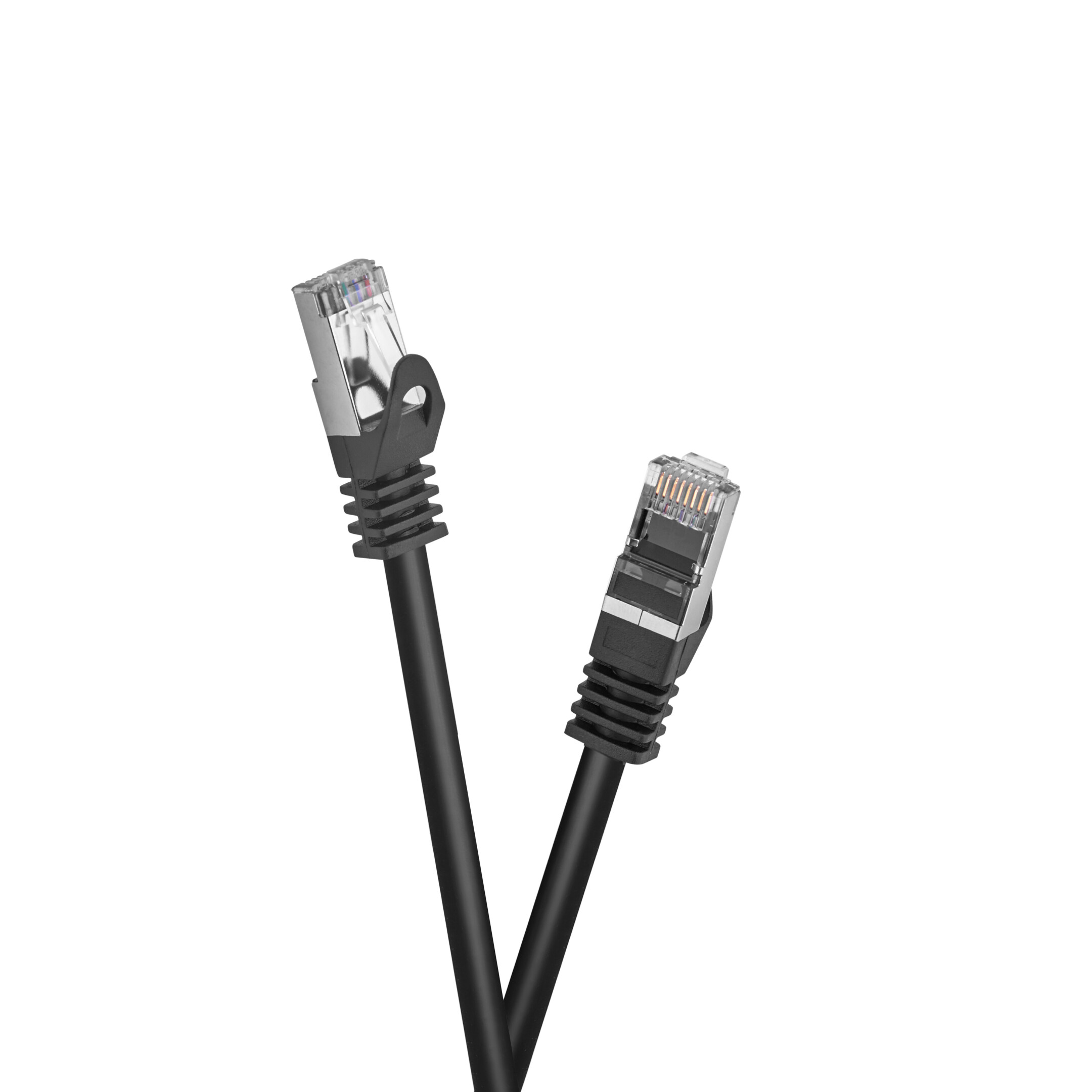















£6.10*


Product information
The celexon CAT6A patch cable - S/FTP transmits network signals at a speed of up to 10 gigabits per second at an operating frequency of up to 500 MHz. This means that it can not only be used in the classic TCP/IP area, but also for IP streaming and HDBaseT infrastructures.
The common standards for home network infrastructures are CAT 5 and 6. In the professional sector, standards 7 and 8 are also used.
For the CAT 6A specification, the contact geometry in the RJ45 plugs has been optimised. Here, the maximum transmission rate and speed is achieved. The transmission speeds of standards 7 and 8 cannot be achieved with an RJ45 plug.
CAT 5: CAT 5 patch cables are still very common in private applications. In professional areas, they are increasingly being replaced by the higher standards. With a frequency of up to 100 MHz, data rates of 1 Gbps are transmitted. Especially in domestic areas, these transmission parameters are usually completely sufficient for connecting routers, computers and other devices.
CAT 6: CAT 6(A) patch cables transmit data rates of up to 10 Gbps at a frequency of up to 500 MHz. This standard is now used in all areas and is currently the most common standard in this area. For new installations, it is recommended to use this standard directly, as the cables are better protected against external influences than CAT 5 cables.
CAT 7: Patch cables with the CAT 7 standard can only transmit data rates of up to 10 Gbps at a frequency of up to 1,000 MHz with a GG45 connector. The classic RJ45 connector cannot fully utilise this bandwidth. Since the periphery is not very widespread and is comparatively very expensive, the area of application here is very limited and is found almost exclusively in professional installation areas.
CAT 8: Cables with the CAT 8 standard are used exclusively in professional areas such as data centres. Transmission speeds of up to 100 Gbps at 2,000 MHz are achieved - but only over distances shorter than 30 metres. For many "normal" areas, the cost-benefit ratio is not balanced here.
The S/FTP (Screened Foiled Twisted Pair) specification describes the shielding structure of these patch cables.
The wire pairs are each shielded with a foil. In addition, all 4 wire pairs are shielded together with a wire braid - this corresponds to the standardisation according to ISO / IEC 11801 Ed 2.2. Thus, the cables are optimally protected against interfering external electromagnetic fields.
S/FTP (Screened Foiled Twisted Pair)
S= Screened - braided shield
F = Foiled - foil shield
TP = Twisted Pair - twisted pair wires
The LSZH cable sheathing (Low Smoke Zero Halogen) of the celexon CAT 6A patch cable consists of thermoplastic or thermoset moulding compounds and is free of halogens. Unlike PVC cables, LSZH cables produce hardly any toxic smoke gases if a fire occurs, making them particularly suitable for indoor use. In public areas where network infrastructures have to be installed close to places with a high volume of people or openly, the use of LSZH cables is prescribed by the EU. The toxic fumes from PVC when it burns pose a risk to human health.
The CAT 6A patch cables ensure high corrosion resistance and reliable transmission performance thanks to their gold-plated contacts.
KEY INFORMATION
- RJ45 plug to RJ45 plug
- Standard: CAT.6A, Assignment: TIA/EIA 568B
- Transmission mode: Ethernet, HDBaseT, AVoIP etc.
- Transmission speed: 10 Gbps
- Bandwidth: 500 MHz
- Connector: gold-plated precision plug contacts, transparent plastic, nickel-plated housing, flexible bend protection
- Cable: high-purity copper strands (4x twisted pair - 7/0.135 BC), S/FTP shielding, AWG27, halogen-free LSZH sheath with 5.8 mm diameter
- Cable colour: black
- Cable type: Round
- Cable length: 5m
- REACH, RoHs compliant
IN THE BOX
- 1x celexon CAT 6A patch cable - S/FTP 5m, Black
Technical data
| Name | celexon CAT6A patch cable - S/FTP 5m, Black |
|---|---|
| Article number | 1000020703 |
| GTIN/EAN | 4260094744624 |
| Manufacturer SKU | 1000020703 |
| Model name | 1000020703 |
| Brand | celexon |
| Product Type | Cable |
| Product Series | celexon CAT 6A - S/FTP |
| Inputs | 1x Ethernet |
| Outputs | 1x Ethernet |
| Cable length | 5 m |
| Product width | 4.1 cm |
| Product height | 1.18 cm |
| Weight | 0.18 kg |
| Colour | Black |
| Condition | New |
| Warranty | 24 Month |
| Warranty type | Bringin service Service and support information |
Product safety
| Person responsible for the EU |
|---|
| celexon Europe GmbH |
| Gutenbergstraße 2 |
| 48282 Emsdetten |
| Germany |
| info@celexon.de |



